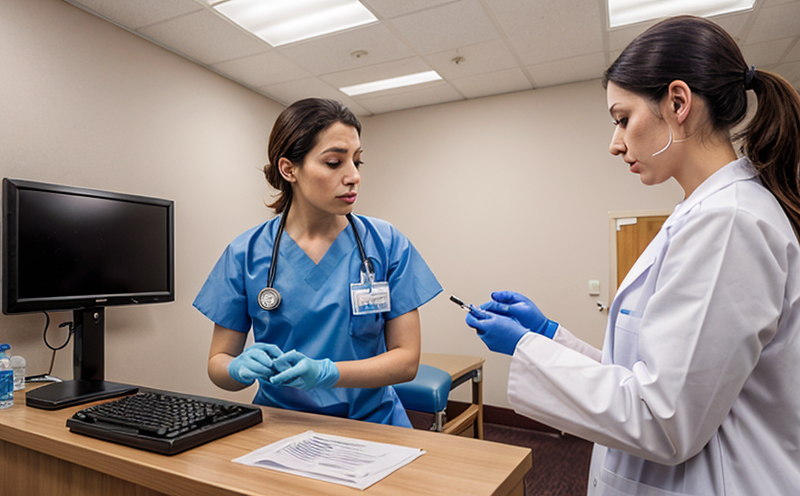Veterinary Drug Reproductive Toxicology Testing in Animals
Reproductive toxicology is a critical discipline within veterinary drug testing aimed at assessing the potential adverse effects that pharmaceuticals, pesticides, and other xenobiotics may have on animal reproduction. This service ensures that drugs intended for use in animals are safe not only for their target species but also for the animals they interact with, including pregnant females or those involved in breeding.
The testing process involves a series of carefully designed experiments to identify potential reproductive hazards. These can include disruptions in gametogenesis (the formation and maturation of germ cells), alterations in fertility rates, changes in pregnancy outcome, and impacts on fetal development. The focus is on ensuring that the drug does not interfere with normal physiological processes such as ovulation, fertilization, implantation, or gestational development.
For quality managers and compliance officers, understanding these risks can help in making informed decisions about product safety and regulatory compliance. R&D engineers benefit from this service by incorporating reproductive toxicology data into their drug development pipelines, ensuring that new compounds are thoroughly evaluated before commercialization. Procurement professionals can leverage such testing to choose suppliers who adhere to stringent safety standards.
The process typically begins with a review of the literature on the drug in question and its known or suspected interactions with reproductive systems. From there, specific tests may be designed based on the species involved. For instance, rodent models are often used due to their rapid reproduction cycles and genetic homology with other mammals. However, other species like dogs, cats, or even birds might be considered depending on the drug's intended use.
Standard methods for reproductive toxicology testing include:
- Reproductive Tract Pathology
- Fertility and Sterility Testing
- Pregnancy Outcome Studies
- Developmental Toxicity Assessments
Specimen preparation involves collecting samples from various tissues and fluids that may be affected by the drug. This can include blood, urine, semen, vaginal secretions, fetal tissue, and maternal organs.
The instrumentation used in these tests includes advanced imaging technologies like MRI or ultrasound to visualize reproductive structures, biochemical assays to measure hormone levels, and histological techniques to assess organ health at microscopic levels.
Reporting is comprehensive, detailing all observed effects along with statistical analyses that support the findings. Compliance officers rely on this data for labeling purposes, ensuring that any necessary warnings are included in product information.
Why It Matters
The importance of reproductive toxicology testing cannot be overstated, especially when it comes to veterinary drugs. The health and welfare of animals directly impact the broader ecosystem they inhabit. Ensuring that these drugs are safe for all animal populations, including those involved in reproduction, is crucial.
Animal species used in drug development often play key roles in their respective ecosystems. For example, reproductive success rates among wildlife can be significantly affected by exposure to harmful chemicals or medications. By conducting thorough reproductive toxicology tests, we minimize the risk of these substances leading to population declines or ecological imbalances.
In domesticated animals like pets and livestock, ensuring drug safety is equally important for both animal owners and consumers of agricultural products derived from these animals. Consumers expect that any medication administered will not only treat health issues effectively but also pose no harm to the animals themselves.
For researchers involved in biotechnology or genetic engineering projects involving animals, reproductive toxicology testing ensures that transgenic traits do not inadvertently disrupt reproductive processes. This is particularly relevant as more complex genetic modifications are made possible by advancements in biotechnology.
Environmental and Sustainability Contributions
In addition to direct animal health benefits, reproductive toxicology testing contributes positively to environmental sustainability efforts. By identifying potential reproductive hazards early in the drug development process, we can prevent the introduction of harmful compounds into ecosystems.
The testing ensures that agricultural chemicals used on crops do not inadvertently affect local wildlife populations through contaminated runoff or air dispersion. Similarly, in pet care and livestock industries, ensuring safe veterinary drugs helps maintain biodiversity by preventing unintended consequences from widespread use.
Through rigorous testing protocols aligned with international standards such as ISO 10993-24, we strive to minimize environmental impacts while maximizing product safety and efficacy. This commitment aligns with broader sustainability goals aimed at reducing ecological footprints across various industries.
Use Cases and Application Examples
| Use Case/Application Example | Description |
|---|---|
| Pesticide Safety Evaluation | Evaluating the safety of pesticides for farm animals and their offspring. |
| Veterinary Drug Development | Ensuring new veterinary drugs do not harm reproductive health before market release. |
| Pet Care Product Testing | Determining the safety of over-the-counter pet medications for pregnant or nursing animals. |
| Wildlife Conservation Research | Assessing how human activities impact wildlife reproduction in protected areas. |
- Development of safer alternatives to existing drugs that could pose reproductive risks.
- Evaluation of veterinary products for export markets with stringent safety regulations.
- Determining the impact of environmental factors on animal reproduction in different geographical regions.
These examples highlight how comprehensive reproductive toxicology testing contributes to safer, more sustainable practices across various sectors within clinical and healthcare testing.





